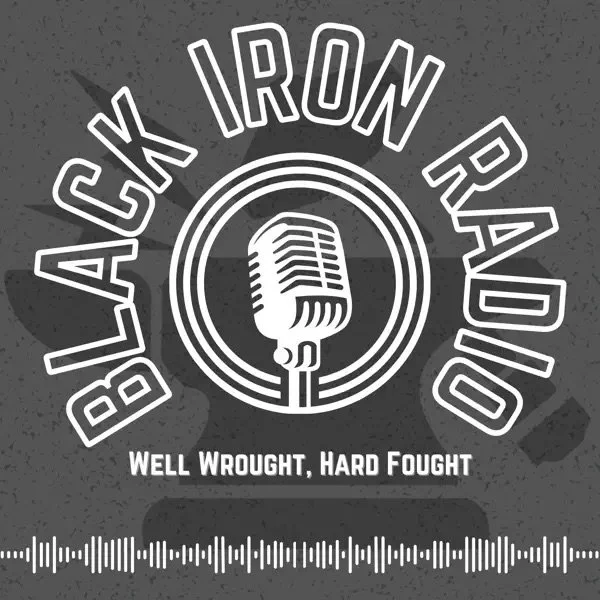Body Positivity vs. Body Neutrality
In this blog post, we’re breaking down key insights from our latest Black Iron Radio episode, where coaches Morgan, Joyce, and Acacia dive into the concepts of body positivity and body neutrality—what they mean, how they differ, and why each approach can serve a different purpose in someone’s body image journey. They explore everything from how these movements have evolved, to the pressures of toxic positivity, to finding peace with your body through neutrality. Whether you’re working through body image struggles yourself or supporting someone else, this conversation offers thoughtful perspectives and practical mindset shifts that can help create more freedom and flexibility around food, fitness, and self-image.
BLACK IRON RADIO EP. 235: BODY POSITIVITY VS. BODY NEUTRALITY
Morgan, Joyce, and Acacia dive into two powerful frameworks for navigating body image: body positivity and body neutrality. They unpack where each movement comes from, how they show up in coaching conversations, and why neither one is a perfect fit for everyone. The team shares personal stories, challenges the commercialization of body love, and talks about how identity, culture, and lived experience shape how we feel in our skin. Whether you’re learning to celebrate your body or just want a break from constantly thinking about it, this convo brings nuance, empathy, and practical takeaways.
📲 Listen & Subscribe: Apple Podcasts | Spotify
At Black Iron, we talk a lot about body image—not just because it comes up with clients, but because we live in a world drenched in diet culture. Coaches Joyce, Acacia, and Morgan recently sat down to unpack the nuance between two big concepts: body positivity and body neutrality.
Spoiler: there’s no one-size-fits-all approach. It’s all about what helps someone feel less at war with their body.
The Positivity Push: Is It Always Helpful?
Body positivity has roots in radical movements, particularly led by Black and brown women, fat activists, and other marginalized groups. But in recent years, it’s been repackaged into something shinier—trendy slogans pushed by conventionally attractive, able-bodied, mostly white influencers.
For many, that version of “body positivity” feels forced, even performative. Acacia calls it toxic positivity—the pressure to always celebrate your body, even when that feels fake. Joyce sees it too: clients often fear that if they accept their bodies as they are, they’ll lose the drive to improve their health or fitness. Positivity, for them, feels like giving up.
What Is Body Neutrality, Then?
Body neutrality shifts the focus away from appearance altogether. Instead of loving every inch of your body all the time, you just… exist in it. It’s about respecting what your body can do, appreciating its function, and letting go of obsessive body checking.
For a lot of clients, neutrality is a gentler, more accessible place to land. Joyce describes it as the “space between” full-on self-love and body loathing. It allows you to have a thought like “I hate my arms today” and trace where that thought came from—society? childhood? old wounds?—and then reframe it instead of spiraling.
As Morgan put it, neutrality is like stepping off the rollercoaster of constant self-evaluation. You don’t have to love your legs for being strong. You don’t even have to love them at all. You just let them be legs and go about your day.
Which Is Better?
Both have value. Body positivity can be a stepping stone out of self-hatred. Body neutrality can be a peaceful landing spot once you’re tired of performing love you don’t always feel. Sometimes a client needs one more than the other. Sometimes they need both.
Joyce likens neutrality to asking yourself: “What gives evidence of my dopeness today?” Maybe it’s not aesthetics—it’s your strength, your resilience, or just the fact that you showed up.
The Medical System, Advocacy, and Body Politics
The coaches also talked about the way body image influences medical care—especially for women and people of color. Acacia shared a moment where a provider assumed she was there for weight loss, ignoring her actual symptoms. Morgan emphasized the importance of self-advocacy and asking questions like: Would you recommend this to a patient in a smaller body? or Are you basing this diagnosis on my labs or just my weight?
Helping clients feel empowered in clinical spaces is part of this work too.
Social Media and Performative Positivity
Let’s talk about the elephant in the algorithm. Plenty of people—again, often white, thin, and conventionally attractive—post #bodypositive content to sell products, build followings, or co-opt a movement they weren’t originally part of.
Morgan admitted she’s posted “what I eat in a day” videos to show how her body changes across meals. At the time, it felt real. Looking back, she wonders if it helped or if it fed into the aesthetic-driven performance of healing. The team agrees: it comes down to intention. Are you trying to impress? Or make an impact?
So, Where Do We Go From Here?
There’s no perfect end goal. Healing doesn’t mean you never have a bad body image day again. It just means those thoughts don’t get to drive the bus.
Progress might look like taking a progress photo when you feel good and skipping it when you don’t. It might mean not letting your reflection dictate your mood. It might mean shifting from “I have cellulite and that’s beautiful” to “I have cellulite and it’s just there. Moving on.”
Whether you land in body positivity, body neutrality, or float between the two, the goal is the same: less obsession, more peace.
🎙️ WANT MORE? SUBSCRIBE TO BLACK IRON RADIO!
If you enjoyed this conversation, check out more episodes of Black Iron Radio, where we cut through the noise and give you real, no-BS advice on feeling, performing, and looking your best. Each week we share practical nutrition, training, and wellness strategies and tips to help you succeed.
📲 Listen & Subscribe: Apple Podcasts | Spotify


